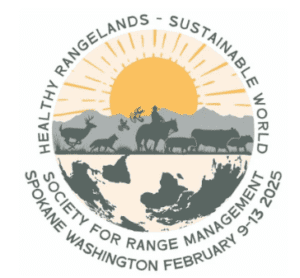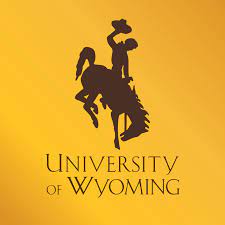Invasive Species
Meeting website.
Save the date for the 2025 SRM Annual Meeting in Spokane, WA.
February 9-13, 2025
View synthesis.
Fire is an integral component of many Southwest ecosystems; however, fire regimes across the region have been affected by climate change, creating conditions to which these ecosystems have not adapted. Since 1980, fire frequency, size and severity have increased in many ecosystems in the western US due to changes in climate combined with a history of fire suppression and other forest management practices, such as grazing and logging…
…The goal of this synthesis is to provide a summary of the literature, published in 2023, on fire and fire-related topics
View article.
We combined predicted susceptibility with burn probability to quantify the 10-year total risk of cheatgrass dominance. Finally, we identified portions of the landscape (1) at risk of fire-induced conversion to cheatgrass dominance, (2) consistently susceptible to cheatgrass dominance, or (3) consistently resistant to cheatgrass dominance. At the scale of the sagebrush biome, we found that abiotic susceptibility to cheatgrass dominance drives total risk, regardless of fire. At local scales (i.e., individual 30 m pixels), burning increased the probability of cheatgrass dominance by a median of 14 %. Threshold-based analyses indicate that 10–31 % of the sagebrush biome was at risk of fire-induced dominance, with 55 % exhibiting abiotic resistance and 5 % exhibiting abiotic susceptibility to dominance regardless of fire. Burn probability was higher in areas predicted to be susceptible to dominance, illustrating how cheatgrass invasion can cause ecosystem conversions that are then sustained by grass-fire cycles. Disentangling the influence of abiotic conditions and fire contributes to our understanding of the mechanisms driving invasion dynamics, and modeling the probability of dominance can help anticipate where ecological transformations are at risk of occurring. Our approach can facilitate the prioritization of management actions in the sagebrush biome and be used as a framework for modeling invasion risk in other disturbance-prone ecosystems.
View webinar recording.
This webinar for land management practitioners goes deep on subjects like wildfire prevention, rangeland restoration, and invasive vegetation treatments.
Workshop webpage.
In this two-day field and classroom workshop in Sheridan, WY, participants will build upon the information presented in the Level 1 Virtual Workshop: Defending and Growing the Core by Breaking the Cycle of Annual Grass Invasion. This hands-on workshop is designed to take a more in depth look at how you can strategically plan for and manage invasive annual grasses (IAG). Participants will visit various sites including intact core areas and growth opportunity areas where we will discuss potential management approaches in each situation. This is also a great opportunity for participants to see multiple management tactics and their effects on rangeland plant communities over time. We will explore various monitoring techniques and discuss strengths and weaknesses. Through this field workshop, participants will become familiar with different management practices and improve their capacity to determine which management tactics will best suite their needs in different situations.
View article.
Chemical herbicides increased soil mineral nitrogen in proportion to their negative effects on plant cover for 2 years after treatments in all sites and increased soil water and net N mineralization (measured at one site) but did not affect total carbon, nitrogen, or organic matter. Invertebrate responses to herbicides varied by site, and invertebrates increased with chemical herbicides at the highest, wettest site. We show that herbicide treatments can exacerbate pulses of mineral nutrients, which previous studies have shown can weaken ecosystem resistance to invasion. Thus, restoration strategies that increase the likelihood that desired plants can capture mineralized nutrients after herbicide application will likely be more successful.
View article.
Predicted fire-moderation benefits over the first 4 years of fuel break implementation were modest and variable, but, generally, increases in exotic annual grasses and their associated fire risks were not observed. Nonetheless, ancillary evidence from shrublands would suggest that treatment-induced shifts from shrub to herbaceous fuel dominance are expected to improve conditions for active fire suppression in ways not readily represented in available fire models.
View article.
We evaluated the effects of controlling medusahead with prescribed burning and imazapic application followed 1 yr later with drill-seeding large perennial bunchgrasses at two seeding rates (medium and high) for more than a decade post seeding. Large perennial bunchgrass cover and density was > 16- and > 4-fold greater in revegetation treatments compared with the untreated control 11 yr after seeding, respectively. Invasive annual grass abundance was ∼twofold greater in the untreated control compared with the revegetation treatments. These results suggest that revegetation efforts in medusahead-invaded rangelands can have persistent ecological benefits (increased perennials and decreased invasive annuals). The high seeding rate resulted in more perennial bunchgrass and less invasive annual grass compared with the medium seeding rate over the duration of the study, suggesting that high seeding rates may be needed to maximize benefits. Revegetation of medusahead-invaded rangelands can have long-lasting effects, though high establishment of perennial bunchgrasses is likely necessary for success.
View article.
We imposed spring-applied annual grass control treatments followed by fall seeding of a perennial bunchgrasses and then measured vegetation response for the next 3 yr in cheatgrass and medusahead-invaded communities. Spring treatments that included imazapic application (at a low rate), followed by fall seeding of perennial bunchgrasses, successfully controlled annual grasses and substantially increased perennial bunchgrass cover and density. Spring burning and glyphosate herbicide application, without imazapic, were not successful in promoting substantial increases in perennial bunchgrass cover. Spring burning before imazapic application was the most successful treatment for rehabilitation seeding. By the third yr after seeding, perennial bunchgrass cover was 17% in the spring burn-imazapic treatment, greater than what is generally found in intact Wyoming big sagebrush-bunchgrass communities in this region. The results of this study provide strong evidence that spring-applied control treatments including imazapic can be part of successful revegetation efforts, thereby decreasing some of the logistical challenges associated with revegetation of annual grass−invaded sagebrush rangelands.
Webinar recording.
Sam “Jake” Price and Matt Germino, USGS Forest & Rangeland Ecosystem Science Center, present findings from their recent publication on the Soda Fire fuel breaks and how they might help to break the annual grass-fire cycle. Q&A to follow the presentation.







